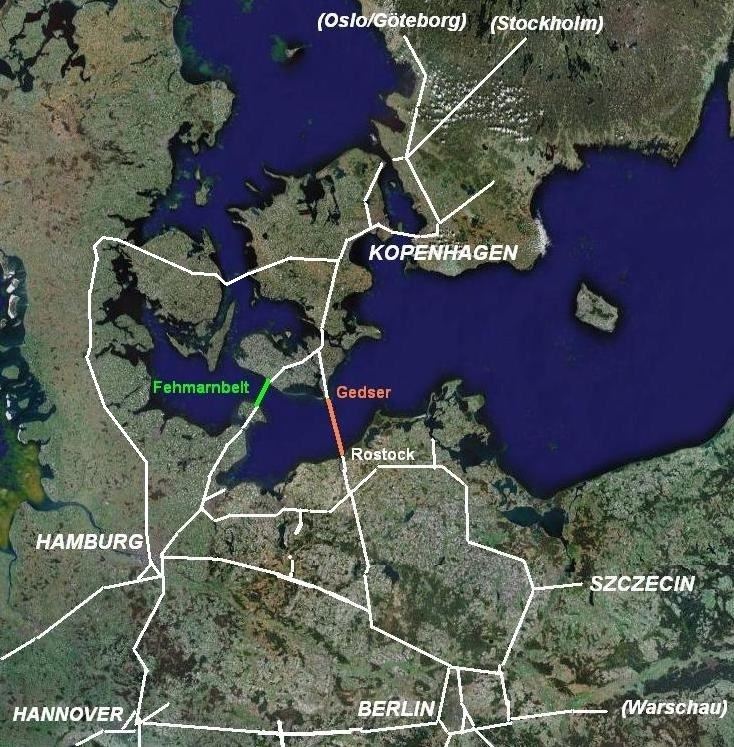 | ||
Similar Fehmarn Belt Fixed Link, Frederick IX Bridge, Storstrøm Bridge, Fehmarn Sound Bridge, Schwerin Palace | ||
The Gedser-Rostock Bridge is a proposed project to link the Danish island Falster with the German city Rostock, stretching 40-45 kilometres (25–28 miles) across the Baltic Sea. The proposal is an alternative to the Fehmarn Belt Fixed Link.
Contents
The bridge (or tunnel) would complete the European route E55 and be the main link between Scandinavia and Berlin. Today, Gedser and Rostock are linked by the Scandlines ferries who also operate a Fehmarn Belt line.
If built as a bridge, it would be the longest bridge in the world over a body of water. If built as a tunnel, it would still be the longest underwater tunnel in the world, but measured by total tunnel length the Seikan Tunnel and the Channel Tunnel are longer. It would also be the only bridge across open sea and not a named strait, belt, sound or channel.
Although the distance is twice as long as across the Fehmarn Belt, the bridge could be built in part as a low bridge since water depths are more shallow than in the Fehmarn Belt. The Gedser Reef offers depths of less than 10 metres (33 ft) for some 15 km (9 mi) to the southeast of Gedser.
Arguments
Proponents argue that a Gedser-Rostock bridge would be much better situated as a link from Scandinavia to Berlin and high-growth areas in Eastern/Central Europe (especially Poland). The distance between Copenhagen and Berlin would be 140 km (87 mi) shorter by Gedser-Rostock as compared to by the Fehmarn Belt. From Copenhagen to Munich, 160 km (99 mi) could be saved, and from Copenhagen to Poland, 230 km (143 mi). In the debate on the Fehmarn Belt project opponents in Denmark have called it a vision dating from the Cold War, when it would have formed the obvious link from Copenhagen to Hamburg and Western Europe. Also, Hamburg already today is a bottleneck for road and rail traffic. The drawback of the Gedser-Rostock solution, apart from its greater length, is the journey from Copenhagen to Hamburg will be increased by 60 km (37 mi). The current ferries across the Fehmarn Belt would, however, offer an alternative if they continued to operate.
Political views
The Danish Social Liberal Party and the Danish People's Party said on 3 June 2007 that they favoured the Gedser-Rostock bridge. They were supported by traffic researchers and a consultant from the German Ministry of Traffic.
The Danish transport minister Flemming Hansen (Conservatives) rejected the Gedser-Rostock proposal on 4 June 2007, claiming that it would put the process "ten years back". The Social Democrats, who agree with the Government in this matter, mainly saw the new proposal as an attempt to derail the process, but also said that "if the Germans won't join in, but wish something else, then we will of course listen".
On 29 June 2007, the Danish and German authorities agreed to support the Fehmarn Belt Fixed Link project rather than the Gedser-Rostock bridge.
